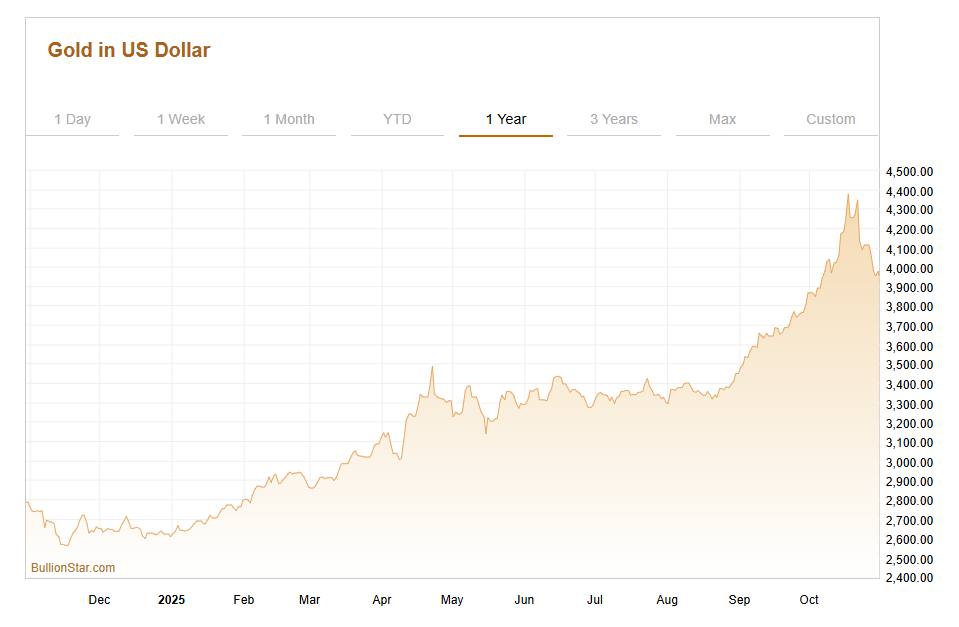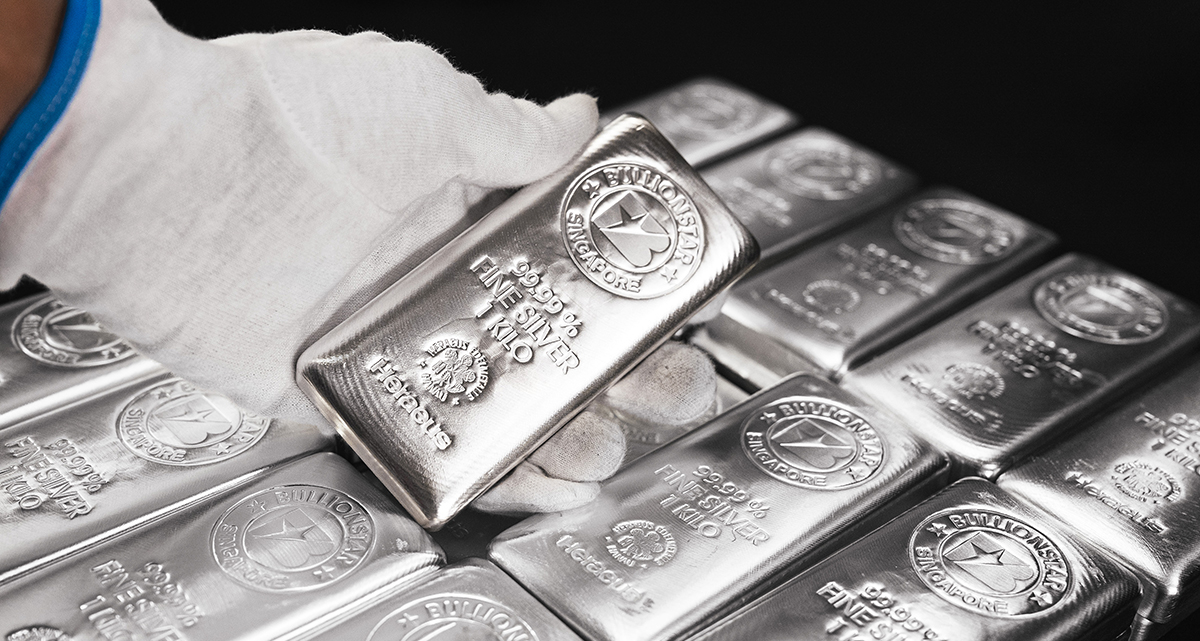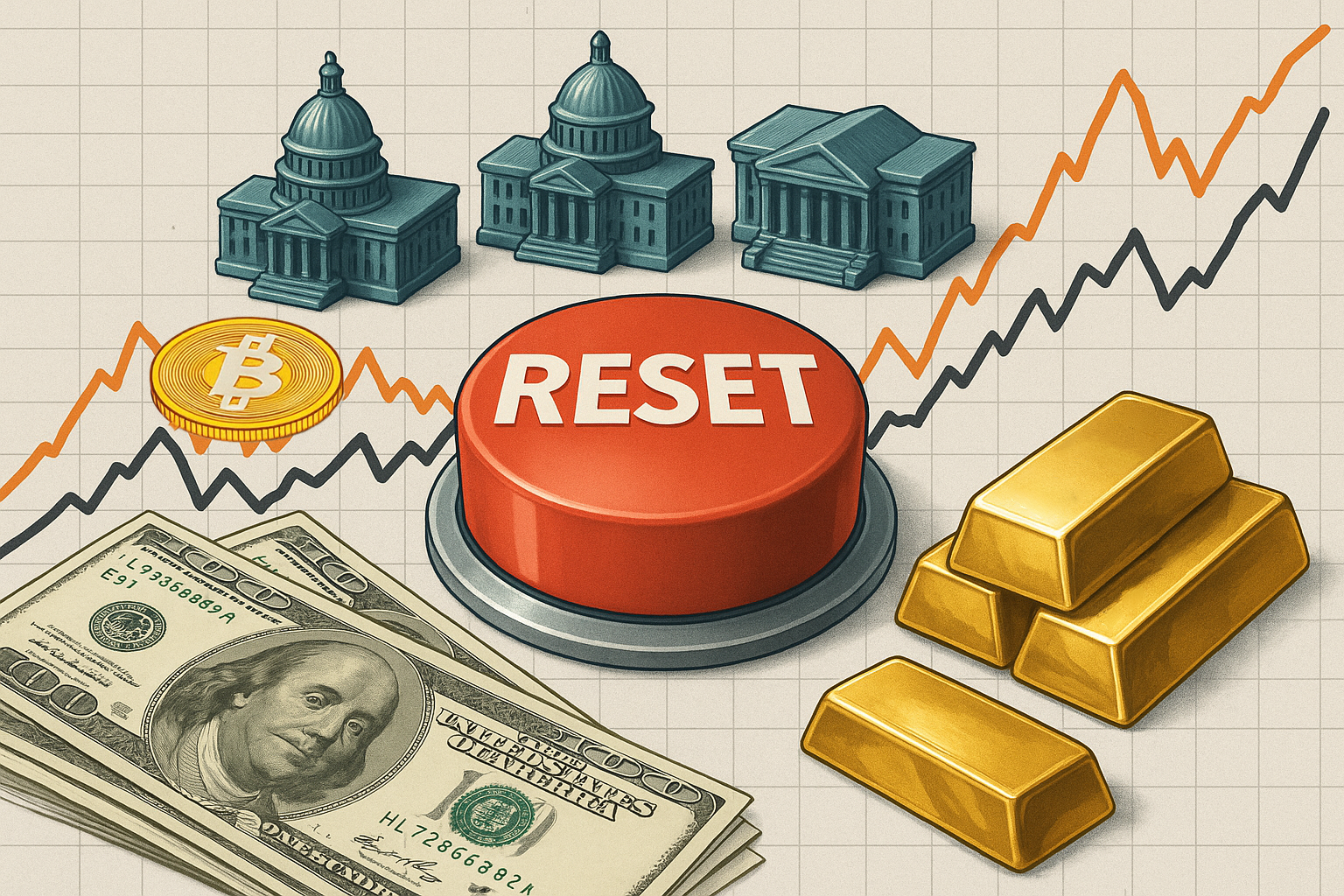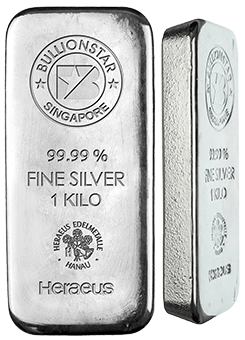Jim Rogers on Gold, Asia, and the Future of Money
Veteran investor and author Jim Rogers joined BullionStar’s Claudia Merkert for a wide-ranging conversation discussing record-breaking bullion demand, Asia’s economic ascent, and the enduring role of gold and silver in times of uncertainty. Speaking candidly, Rogers shared his long-term views on markets, currencies, and human behavior — from buying despair, not euphoria, to the lessons of history that continue to shape his investment philosophy.
Asia’s Century and Why Jim Chose Singapore

Rogers has long maintained that the 21st century belongs to Asia. When asked why he chose to make Singapore his home, he described it as both a personal and strategic decision.
“I’m not terribly smart, but I am smart enough to know that the 21st century will be the century of Asia, whether we like it or not. China’s on the rise again, many Asian countries are on the rise again. If you consider Australia Asian, it’s on the rise too. I hope that it all continues. Both of my children speak perfect Mandarin, fluent Mandarin, like natives. And I hope that I’m preparing them for the 21st century.”
He explained that teaching his children Mandarin was part of preparing them for a global future increasingly centered around Asia. His move to Singapore reflects a conviction that the world’s economic and cultural energy has shifted eastward — and that those who adapt to it will thrive.
Singapore as a Bullion Hub

Asked why Singapore stood out among Asian cities, Rogers praised its order, safety, and efficiency, contrasting it with the chaos of the West.
“Singapore’s great. Everything works in Singapore. New York is very exciting, but nothing works. It’s hard to live there, as exciting as it is. And they speak English, and they speak Mandarin. Lee Kuan Yew, who was the guy running Singapore at the time, told me, ‘Jim, we’re glad to have you here, but you must understand that in Singapore, we speak bad English and bad Chinese.’ I now know he was right, but it’s a very easy place to live.”
He went on to note that Singapore’s bilingual culture and stable governance make it a natural hub for global finance and precious metals — a place where east and west meet, and where trust in the system underpins investor confidence.
Gold and Silver in 2025

Turning to markets, Rogers reflected on gold’s historic rise this year and what it means for investors.
“Well, I obviously wished I had more. When something’s making all-time highs and going straight up, you never have enough, and it has been 30 years. My way of approaching gold and silver is I like it when there’s despair. When you read the press or you’re on TV and you see everybody’s there, it’s too late for gold and silver. When there’s pessimism and despair, then I get interested.”
Rogers’ comments capture his core philosophy — contrarian patience. He prefers to accumulate when others panic, not when enthusiasm peaks. The message is clear: buying despair, not euphoria, is what builds durable wealth.
Institutional Shifts Toward Gold
As gold gained mainstream acceptance this year, even major financial institutions began adjusting their models to include it. Rogers welcomed the shift but tempered it with perspective.
“I hope Morgan Stanley’s not too late to figure out that gold and silver have always been good inflation hedges throughout history. And good, I’m delighted — the more the merrier. There is a problem, of course, whenever markets get too hot, they have to cool off.”
He went on to say that while it’s encouraging to see institutional validation, investors should stay wary of hype cycles. For him, gold’s purpose has never been about chasing returns — it’s about holding real, enduring value when other assets stumble.
Holding and Selling Precious Metals

Rogers was clear that his commitment to precious metals is long term. He views gold and silver not as trades but as assets to be held through generations.
“I want my children and grandchildren to have my gold and silver someday. Because it’s always, when there’s a problem, it’s always been a good refuge. But I know enough about markets to know that these things can happen. I hope they don’t, because I don’t want to sell my gold and silver.”
He added that while markets can become irrational, the purpose of owning metals is stability, not timing. For Rogers, gold and silver are less about profit and more about continuity — wealth that outlasts economic cycles and even lifetimes.
The U.S. Dollar and Global Currencies
Asked about the U.S. dollar, Rogers gave a candid assessment of its dominant yet fragile position.
“The U.S. is the largest debtor nation in the history of the world and the debt’s going higher every day. So historically, when countries get in that shape, they usually debase their currency. The U.S. dollar is probably going to be under threat in the future. Who knows how high the price can go in U.S. dollars, because the U.S. dollar… is under duress.”
He went on to explain that while he still holds U.S. dollars for liquidity — simply because the rest of the world continues to trust it — he does so without illusion. In his view, America’s debt trajectory ensures that the dollar’s strength is borrowed time.
Markets, Bubbles, and What Comes Next
Reflecting on global markets, Rogers observed that the current environment feels unusually one-sided.
“It’s one of the few times in history when everybody, nearly every market in the world, has been making new highs… when everybody’s happy and everybody’s on one side of the boat, it’s time to think about doing something new.”
He revealed that he has sold most of his shares worldwide, holding mainly cash and selective positions in China and Uzbekistan. Rogers explained that his caution isn’t pessimism — it’s historical awareness. In markets, he said, universal optimism has rarely ended well.
Potential Monetary Reset

On the subject of a potential “monetary reset,” Rogers did not claim certainty — but pointed to history’s recurring patterns of excess and correction.
“History shows that when everybody is doing well, it’s a time to worry. Will we have a reset, as you call it? I don’t know. I do know that things are great everywhere, and yet there are underlying problems, such as the debt situation in the U.S. and some other countries.”
He went on to note that the next serious downturn will likely be severe, given how long the world has gone without one. Whether the future brings a formal reset or not, he suggested, the conditions for upheaval are already being built.
Protecting Wealth from Governments

Rogers also discussed the risks of state intervention in moments of crisis — from taxes to asset controls — and how individuals might safeguard their wealth.
“I do want gold and silver. I’m certainly not going to sell… I don’t know which country, which currency, which asset is going to be rising again to compete with gold and silver. I don’t know an alternative.”
He reiterated that precious metals remain the ultimate hedge — assets that lie outside political discretion and central bank experimentation. In uncertain times, he suggested, sovereignty over one’s own savings matters as much as yield.
Advice to Young Investors
When asked how a 30-year-old with US $50,000 should invest, Rogers responded with humor before turning serious.
“I would go to the beach… I mainly have cash right now, mainly in U.S. dollars and Uzbekistan. I don’t own many shares anywhere in the world.”
He went on to explain that markets today reward patience more than aggression. For younger investors, his advice was implicit: preserve capital, resist the crowd, and wait for true opportunity — because real bargains never arrive during universal optimism.
Life, Travel, and Human Nature
Having traveled through 116 countries, Rogers reflected on what unites people everywhere.
“I have found we’re all alike. We all like to sing and dance and have a good time. Everybody likes to drink some beer or some wine… None of us want bad times, none of us want despair.”
He noted that beneath cultural and political differences, human behavior — and by extension, investor behavior — is remarkably consistent. Fear, greed, and joy move markets just as they move people, a truth he has observed on every continent.
Legacy and Lessons
In a rare personal moment, Rogers spoke about how his outlook on life changed after becoming a father.
“For all my life, I’d never wanted children… Then I had one and I realized I had been wrong, that children can be a fabulous and wonderful experience. So I had another one… I hope I can teach my children and everybody to think for themselves and not to follow the crowd. The crowd is usually not right.”
He said his greatest hope is not for wealth, but for his daughters to think independently — to act with conviction rather than conformity. It’s the same principle that has guided his investing career: question consensus, and trust your own analysis.
Conclusion
Across nearly every topic — from gold and silver to currencies, markets, and human behavior — Jim Rogers’ message was one of patience and perspective. He sees excess as cyclical, optimism as a warning sign, and tangible assets as enduring anchors in a world of shifting confidence.
For Rogers, wealth is not about chasing momentum but preserving purchasing power and independence. Whether speaking about his investments, his move to Singapore, or his hopes for his children, the principle remains constant: think for yourself, stay disciplined, and prepare for the future long before the crowd realizes it’s coming.
In a time of rising prices, rising debts, and rising uncertainty, his words serve as both reminder and challenge — that real security lies not in prediction, but in preparation.
Popular Blog Posts by BullionStar
 How Much Gold is in the FIFA World Cup Trophy?
How Much Gold is in the FIFA World Cup Trophy?
 Essentials of China's Gold Market
Essentials of China's Gold Market
 Singapore Rated the World’s Safest & Most Secure Nation
Singapore Rated the World’s Safest & Most Secure Nation
 Infographic: Gold Exchange-Traded Fund (ETF) Mechanics
Infographic: Gold Exchange-Traded Fund (ETF) Mechanics
 BullionStar Financials FY 2020 – Year in Review
BullionStar Financials FY 2020 – Year in Review
 Back-to-Back Records: BullionStar Sets New Highs in September and October 2025
Back-to-Back Records: BullionStar Sets New Highs in September and October 2025
 Jim Rogers on Gold, Asia, and the Future of Money
Jim Rogers on Gold, Asia, and the Future of Money
 Market Update: Physical Gold & Silver Shortages
Market Update: Physical Gold & Silver Shortages
 A Glimpse Inside BullionStar’s Precious Metals Vault
A Glimpse Inside BullionStar’s Precious Metals Vault
 Rick Rule on Why Gold Could Reach $10,000 as the Dollar Declines
Rick Rule on Why Gold Could Reach $10,000 as the Dollar Declines




 BullionStar
BullionStar 0 Comments
0 Comments










